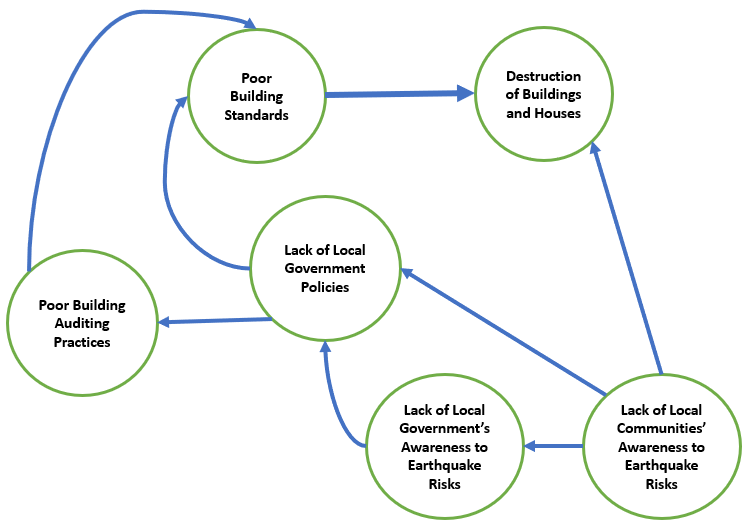Our current disaster risks thinking is linear. It flows from a cause and effect mindset. For instance, our conventional explanation as to why many houses and buildings are destroyed after an earthquake is because of the poor standards followed in their construction. Pretty straightforward — cause: poor building standards; effect: easily destroyed houses and buildings. Linear thinking tends to simplify things. As a society, we are very used to this mindset.
Many practitioners analyze these three factors — hazard, exposure, and vulnerability, in trying to understand risks. They also follow the linear paradigm. Again, risks in this formula is simplified.
Today, there is a growing realization that we must no longer view risks as linear. Instead of the usual cause and effect, we must look at risks from a systems perspective. It is a mindset that sees risks from an interconnected ecosystem.
A brief comparison of the linear and systems paradigm is illustrated below:
Table 1. Linear and Systems Paradigm
| Aspect | Linear Paradigm | Systems Paradigm |
| Risk Management | Very rigid | Flexible |
| Risk Governance | Focus on best practices | Focus on emerging practices |
| Focus | Hazard-based | Systems-based |
The systems paradigm moves away from the simplified understanding of risk and it takes into account its true nature, that, it is in fact, complex.
This emerging paradigm requires mainstreaming the big picture-thinking as the basis for understanding risks. Systems thinking allows us to see the bigger picture — how risks are interconnected to the different aspects of the system.
Using the systems approach to the earthquake example, we would realize that the poor building standards is not the root cause but merely a symptom of much deeper concern.
A systems thinker would address the disaster risk concern from a much deeper understanding of how it is part of a bigger ecosystem of causes and effects.
In this volatile, uncertain, complex and ambiguous world, we need more systems thinkers in the disaster risk field.



